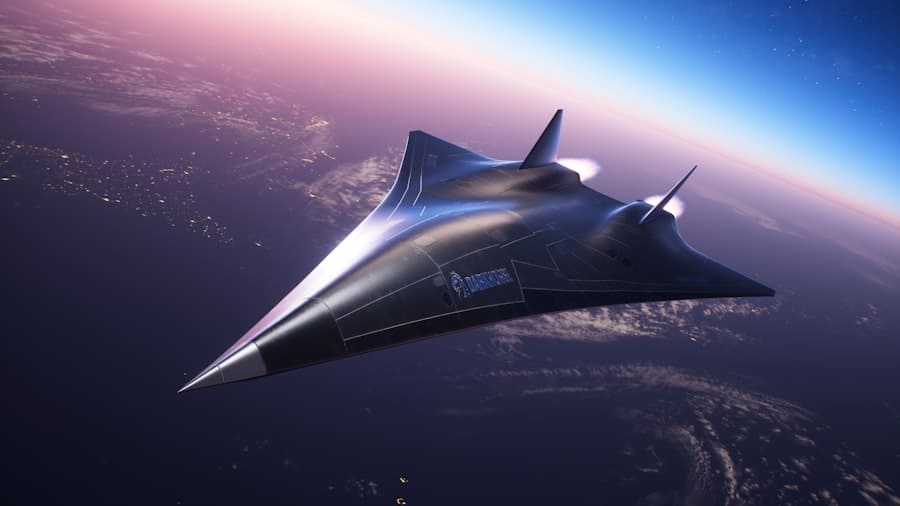Dassault Aerospace, a prominent player in the aerospace industry, is renowned for its innovative designs and cutting-edge technology. Founded in France, the company has established itself as a leader in both military and civilian aviation sectors. With a commitment to excellence and a focus on research and development, Dassault Aerospace has consistently pushed the boundaries of what is possible in aircraft design and manufacturing.
The company is particularly well-known for its Falcon series of business jets, which have set benchmarks in performance, comfort, and efficiency. The aerospace sector is characterized by rapid technological advancements and intense competition, and Dassault Aerospace has adeptly navigated these challenges. By leveraging its engineering expertise and embracing new technologies, the company has not only maintained its competitive edge but has also contributed significantly to the evolution of aviation.
This article delves into the rich history of Dassault Aerospace, its key innovations, achievements, and its role in the global market, while also exploring future prospects and sustainability initiatives.
Key Takeaways
- Dassault Aerospace is a leading aerospace company known for its innovative technology and global presence.
- The company has a rich history and has evolved over the years to become a key player in the aerospace industry.
- Dassault Aerospace has been at the forefront of key innovations in aerospace technology, including advanced aircraft design and avionics systems.
- The company has achieved significant milestones and has made a lasting impact on the global aerospace market.
- Dassault Aerospace continues to expand its global presence and is involved in future projects that will shape the future of the aerospace industry.
History and Evolution of Dassault Aerospace
The origins of Dassault Aerospace can be traced back to the post-World War II era when Marcel Dassault founded the company in 1947. Initially focused on military aircraft, Dassault quickly gained recognition for its innovative designs, such as the Ouragan and Mystère fighters. These early successes laid the groundwork for the company’s future endeavors in both military and civilian aviation.
The introduction of the Mirage series in the 1950s marked a significant turning point for Dassault, as these aircraft became synonymous with advanced aerodynamics and performance. As the decades progressed, Dassault Aerospace expanded its portfolio to include business jets, culminating in the launch of the Falcon series in the 1960s. The Falcon 20 was particularly notable for its versatility and performance, establishing a new standard in the business aviation market.
Over the years, Dassault continued to innovate, introducing models like the Falcon 50 and Falcon 2000, which further solidified its reputation as a leader in business aviation. The company’s ability to adapt to changing market demands while maintaining a focus on quality has been a key factor in its enduring success.
Key Innovations in Dassault Aerospace Technology

Dassault Aerospace has been at the forefront of numerous technological advancements that have transformed the aerospace industry. One of the most significant innovations is the use of advanced materials in aircraft construction. The incorporation of composite materials has allowed for lighter, stronger structures that enhance fuel efficiency and performance.
For instance, the Falcon 7X features a composite wing design that not only reduces weight but also improves aerodynamic efficiency, resulting in lower operating costs. Another area where Dassault has made substantial contributions is in avionics and flight control systems. The introduction of fly-by-wire technology revolutionized aircraft handling and safety.
This system replaces traditional mechanical controls with electronic interfaces, allowing for more precise control and improved pilot feedback. The Falcon 8X exemplifies this innovation, featuring an advanced flight control system that enhances stability and maneuverability while providing pilots with a more intuitive flying experience.
Achievements and Milestones in Dassault Aerospace
| Year | Achievement/Milestone |
|---|---|
| 1953 | Formation of Dassault Aviation |
| 1965 | First flight of the Mirage F1 |
| 1971 | Introduction of the Mirage III |
| 1986 | First flight of the Rafale |
| 2001 | Delivery of the 1000th Falcon business jet |
| 2016 | Launch of the Falcon 8X |
Throughout its history, Dassault Aerospace has achieved numerous milestones that underscore its leadership in the aerospace sector. One notable achievement is the development of the Mirage 2000 fighter jet, which became a cornerstone of many air forces around the world. Its combination of agility, speed, and advanced avionics made it a formidable aircraft during its operational tenure.
The Mirage 2000’s success not only bolstered Dassault’s reputation but also contributed to France’s standing as a key player in global defense. In the realm of business aviation, the Falcon series has garnered numerous accolades for its design and performance. The Falcon 900 was one of the first business jets to feature three engines, providing enhanced safety and versatility.
This model set new standards for range and comfort, allowing it to compete effectively against larger commercial jets for long-distance travel. The continued evolution of the Falcon line, including models like the Falcon 2000LXS and Falcon 6X, showcases Dassault’s commitment to innovation and customer satisfaction.
Dassault Aerospace in the Global Market
Dassault Aerospace operates within a highly competitive global market where it faces challenges from both established players and emerging companies. Despite this competition, Dassault has carved out a significant share of the business aviation sector, particularly in North America and Europe. The company’s reputation for quality and reliability has attracted a loyal customer base among corporate clients and private owners alike.
The global demand for business jets has been influenced by various factors, including economic conditions and changing travel preferences. In recent years, there has been a noticeable shift towards more efficient and environmentally friendly aircraft. Dassault’s proactive approach to addressing these trends has positioned it favorably within the market.
By investing in research and development focused on sustainability and efficiency, Dassault is not only meeting current demands but also anticipating future market needs.
Future Prospects and Projects in Dassault Aerospace

Looking ahead, Dassault Aerospace is poised to continue its trajectory of growth and innovation. The company is actively engaged in developing next-generation aircraft that incorporate advanced technologies such as artificial intelligence (AI) and automation. These innovations aim to enhance operational efficiency while improving safety standards across its fleet.
For instance, projects involving autonomous flight capabilities are being explored to reduce pilot workload and increase operational flexibility. Additionally, Dassault is focusing on expanding its presence in emerging markets where demand for business aviation is on the rise. Countries in Asia-Pacific and Latin America are experiencing increased economic growth, leading to greater interest in private aviation solutions.
By tailoring its offerings to meet the specific needs of these markets, Dassault aims to capture new opportunities while reinforcing its position as a global leader in aerospace.
Sustainability and Environmental Initiatives in Dassault Aerospace
In an era where environmental concerns are paramount, Dassault Aerospace is committed to sustainability initiatives that align with global efforts to reduce carbon emissions. The company recognizes that aviation contributes significantly to greenhouse gas emissions and is actively working to mitigate its environmental impact through various strategies. One such initiative involves investing in research aimed at developing more fuel-efficient engines that produce fewer emissions.
Moreover, Dassault is exploring alternative fuels as part of its sustainability strategy. The use of sustainable aviation fuel (SAF) is gaining traction within the industry as a viable solution to reduce carbon footprints. By collaborating with fuel producers and regulatory bodies, Dassault aims to facilitate the adoption of SAF across its fleet, thereby contributing to a greener future for aviation.
Dassault Aerospace’s Impact on the Aerospace Industry
Dassault Aerospace’s influence on the aerospace industry is profound and multifaceted. From its early days as a military aircraft manufacturer to its current status as a leader in business aviation, the company has consistently demonstrated an ability to innovate and adapt to changing market dynamics. Its commitment to quality, performance, and sustainability positions it as a key player not only within France but also on the global stage.
As we look toward the future, Dassault Aerospace’s ongoing projects and initiatives reflect a forward-thinking approach that prioritizes technological advancement while addressing environmental challenges. The company’s legacy of excellence continues to shape the aerospace landscape, ensuring that it remains at the forefront of industry developments for years to come.


